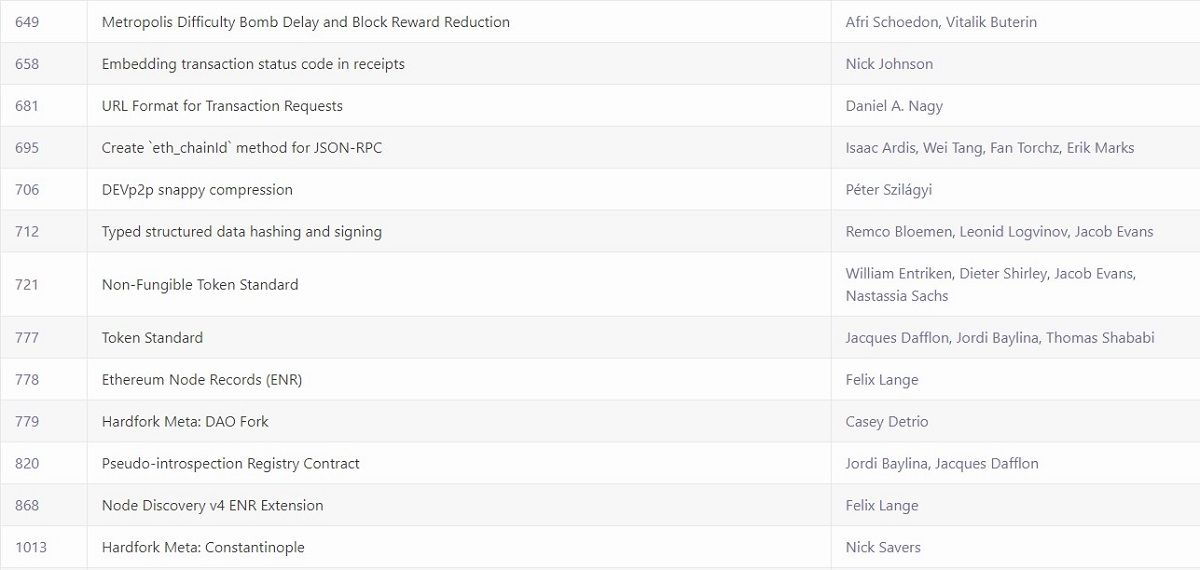NFTs are to JPEGs for monkeys, right? Not allways. The first important use case for NFTs (and it is a potentially excellent use case) was digital art ownership.
However, they can do much more than just digital ownership – thanks to different NFT classes having different tools and features. Here are four other ways you can use an NFT.
There is a sign for it
If you’re still following, yes, NFTs are tokens on a blockchain (usually Ethereum). But users can create different tokens for different purposes using different standards. Ethereum standards come from Ethereum Request for Comments (ERCs) which are finalized in Ethereum Improvement Proposals (EIP).
Different Ethereum standards are referred to by the ERC number. This is an identifier assigned to ERCs based on the order in which they were proposed. Here we will refer to most Ethereum standards by their ERC number to introduce them and then by a more palatable name afterwards. Not all the NFTs we are going to talk about are ERCs. In fact, one is not on Ethereum at all.
These days, with all the pressure to get into “Web3”, “the metaverse”, etc., it can be easy to just jump into creating an NFT’s. You can even find services that can do it for you. But putting in a little research to make your NFT memorable (and even useful) can make a big difference. So make sure you use the right standards and protocols.
1. Virtual ticket stubs
These days, more and more of us spend more time on external events and events in virtual worlds. This can be a little upsetting if you like to keep ticket stubs, event cards and other memorabilia. The good news is that someone invented a virtual ticket stub.
Proof of Attendance Protocols (POAPs) are designed to be the “bookmarks of your life.” POAPs look like marks you might see in mobile games. While mostly decorative, they sometimes grant the holder special abilities, such as access to community groups.
These are not an Ethereum standard; anyone can create them with no background knowledge to celebrate in-person events that don’t come with a ticket or to celebrate the attendees of virtual events. For example, visitors received POAPs for attending the virtual premiere of the documentary “GameStop: Rise of the Players” in the virtual spatial world.
2. Virtual goods in games and apps
A recurring theme here is that different NFTs can confer different titles and rights on the holder. When a person owns an EIP-721 token (standard NFT), they have certain powers over that token. If a token exists in a larger ecosystem, giving this ownership will complicate things.
The holder of an EIP-4400 token is a “consumer” rather than an “owner”. What they can do with this type of token is more limited than what they can do with a 721 token. This ERC was proposed specifically for use in “decentralized apps” where changing a token could negatively affect the larger project.
3. Proof of membership
There is a lot of talk about NFTs and identity. This usually means that owners use NFT images to signal to each other. However, one of the use cases for a specific type of NFT is to show membership in a different way.
EIP-3525 tokens typically do not have a monetary value at all. Their “value” is linked to how many of them are in a given ecosystem. So these tokens can be used to do things like grant membership rights or voting access in an organization like a Decentralized Autonomous Organization (DAO).
The tokens can be transferred but not sold. Furthermore, each token is unique and identifies its holder. This can help keep the democratic actions of DAO members transparent.
4. Loan and rental
That is correct; there is even an EIP to make NFTs rentable. It is EIP-4907. Like other post-EIP-721 standards related to NFTs, this works by allowing limited access to a standard NFT.
This modification of a standard NFT allows an owner to give their NFT to a “user” who can access the NFT but not change or transfer it. After a specified smart contract period, the NFT returns from the user to the owner.
Why would anyone want to rent an NFT? There are tons of reasons.
If we stick to the idea of NFTs as essentially an origin associated with digital artworks, remember that there are a growing number of virtual galleries. EIP-4907 may allow owners of NFTs to more easily lend NFTs to these galleries.
Also remember that an NFT does not have to be flat. Entire virtual worlds are increasingly characterized as NFTs. Imagine a virtual venue marketplace where world creators make money by renting out their worlds for various immersive events. For example, the documentary premiere mentioned above could have taken place in a blockchain-rented virtual theater.
Furthermore, NFTs can be elements of games. Need a special item to beat a boss or complete a mission, but don’t have the coin to permanently unlock it? Maybe you can rent it from another player.
Consider the virtual horse breeding and racing platform ZED RUN. Players breed their own NFT horses to obtain different combinations of fur and traits. Do you only have one horse or want to get a trait that no horse in your stable has? Other players can put their NFT horses out to stud, so you can pay to access that NFT horse to breed your own.
This is where the real benefit comes from
Since NFTs started becoming hyped items a few years ago, people have been asking what their real use was. At first, these questions were difficult to answer, although many proponents believed that innovation would lead to more use cases.
These modified NFTs definitely help show how this once niche technology can have a place in future digital economies.





